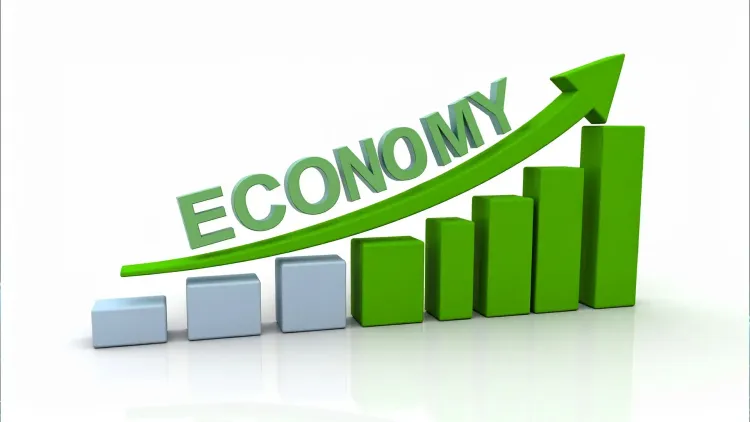Has the World Bank Increased India's FY26 Growth Forecast?

Synopsis
Key Takeaways
- India's growth forecast for FY26: 6.5%
- Strong consumption and agricultural output: Key drivers of growth
- Risks: Global slowdown, trade uncertainties, and sociopolitical unrest
- AI potential: Enhancing productivity and job creation
- South Asia's growth: Projected at 6.6% this year, but slowing to 5.8% in FY26
New Delhi, Oct 7 (NationPress) The World Bank has projected that India is set to maintain its position as the world’s fastest-growing major economy, supported by robust consumption, enhanced agricultural productivity, and increased rural wages, as outlined in a report published on Tuesday.
The World Bank has upgraded India’s growth forecast for FY26 to 6.5 percent, up from the previous estimate of 6.3 percent in June, attributing this to resilient domestic demand, a strong rural recovery, and the positive effects of tax reforms.
In contrast, the report estimates Bangladesh's growth at 4.8 percent for FY26, while Bhutan has seen its forecast for FY26 downgraded to 7.3 percent due to delays in hydropower construction, although a rebound is anticipated in FY27.
Meanwhile, the Maldives is expected to experience a slowdown with a growth rate of 3.9 percent in FY26, and Nepal faces a decline in growth to 2.1 percent in FY26 due to recent unrest and increased political and economic instability, according to the report.
In Sri Lanka, the growth forecast has improved to 3.5 percent for FY26, driven by a surge in tourism and service exports.
Overall, growth in South Asia is projected to be strong at 6.6 percent this year, but is expected to dip to 5.8 percent by 2026, reflecting a reduction of 0.6 percentage points from earlier projections. Risks to this outlook include the global economic downturn, trade policy uncertainties, regional sociopolitical unrest, and labor market disruptions due to emerging technologies like artificial intelligence (AI).
“South Asia has immense economic potential and remains the fastest-growing region globally. However, nations must proactively mitigate growth risks,” stated Johannes Zutt, World Bank Vice President for South Asia. “By maximizing the benefits of AI and reducing trade barriers, especially for intermediate goods, countries can enhance productivity, stimulate private investment, and create jobs for the region’s expanding workforce.”
The report advocates for leveraging the potential of AI to enhance productivity and earnings. The swift evolution of AI is reshaping the global economy and altering labor markets. The South Asian workforce exhibits limited exposure to AI adoption, predominantly engaged in low-skill, agricultural, and manual jobs. However, moderately educated, young workers, particularly in sectors like business services and IT, are at risk. Following the introduction of ChatGPT, job postings in roles most susceptible to AI have dropped by approximately 20 percent.
Nonetheless, AI could yield significant productivity improvements, especially in sectors where AI can complement human workers. Data on job listings in the region reveals a rapidly increasing demand for AI skills, with such positions offering a wage premium of nearly 30 percent compared to other professional occupations.
The report suggests measures to accelerate job creation, including simplifying size-dependent regulations that hinder firm growth, enhancing transport and digital connectivity, improving housing search transparency, upskilling and job matching, and providing safety nets for workers affected by these changes.









